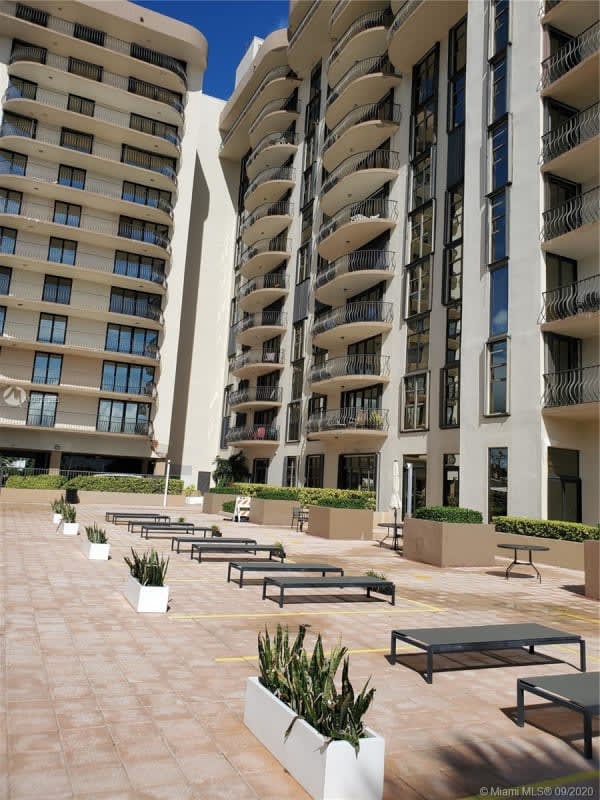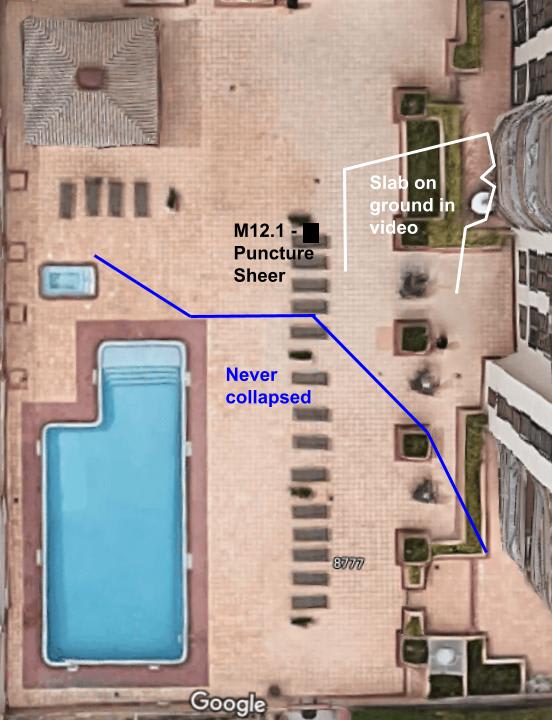After reading the Miami Herald article “Surfside tower was flawed from day one” found by SFCharlie, it sure sounds like the CTS building was poorly designed and poorly constructed and was ready to collapse at any moment. But the article does hedge a bit, stating that “Although the trigger is still unknown, there is a growing consensus that the Champlain Towers’ progressive collapse was initiated by a first-floor slab failure”.
It is interesting that the article quotes the recognized structural expert, Allyn Kilsheimer, as stating that the Champlain Towers North building, which has the same design plans and construction team that the CTS had, “did not raise any red flags after his initial inspection.” In fact, he states further: “I would let my kids and grandkids stay in this building,” Kilsheimer told reporters on July 12. “And, if I find something that would not let me do that, the first thing I would do is tell you, ‘you have to get out of here.’ We have not found anything that concerns me at all on the exposed and visible conditions or on the testing we’ve done so far.” Later, Kilsheimer told reporters he had subsequently looked at the building designs and structural drawings but stood by his assessment that it is safe for occupancy.
Now, I believe this article, which echoes many of the comments made here on this Eng Tips thread. And what I have been trying to do is to find the trigger for this collapse. My latest effort has involved trying to find evidence in the debris pile to support what was found in the TikTok video. I started with the following figure, which shows that the objects in the TikTok video were seen near the M11.1 column at the base of the ramp. This region is close to column 76 and column 28, which lie on either side of the driveway just a few feet beyond column M11.1.
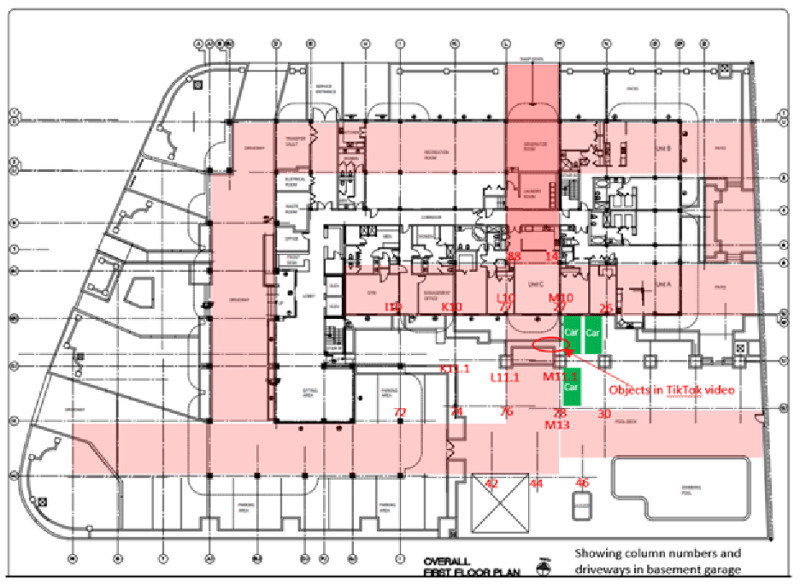
In the next figure, column 76 and column 28 can be seen on the pool deck after the collapse. By noting that column M11.1 lies in a line with column K11.1 which also can be seen in the figure, one can establish that the TikTok objects should be located approximately within the red ellipse in this figure. Note that under the umbrellas in this figure one can distinguish multiple rolls of tarpaper, which were suspected by some to be vaguely visible in the TikTok video.
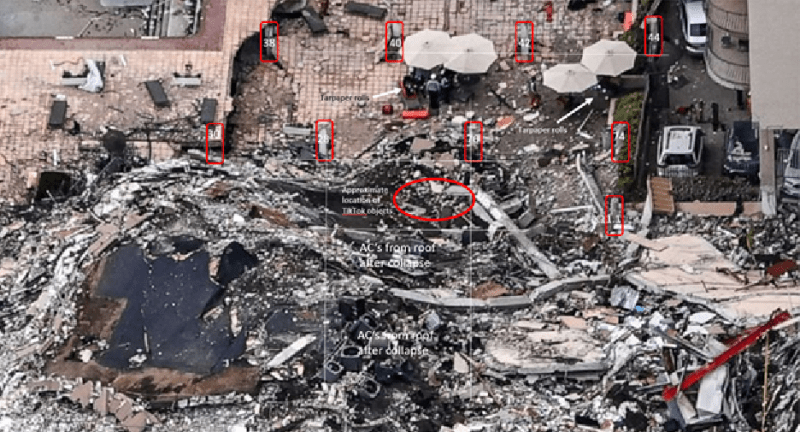
In the next photo, which shows the region of interest from a different angle, I have zoomed in on this region of interest. Sure enough, one can see the same objects that were found in the TikTok video still located on the basement floor under only one layer of debris from the roof of the east wing that collapsed last. One can easily distinguish the top of an air conditioner and the bottom part of the same air conditioner behind it. One can also see two hexagonal weights on rods, one on each side of the air conditioner, along with pipes, a planter, and a long metal bar attached to a cement column that were seen in the TikTok video.
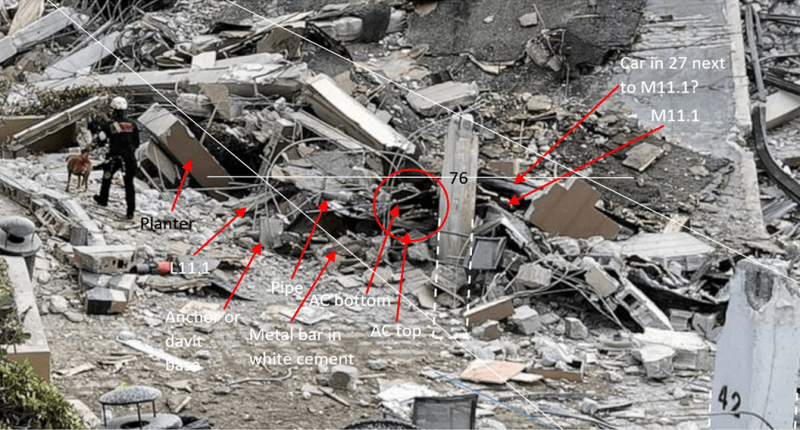
One can see these same TikTok objects in the following photo taken after the west wing of the building was demolished. These objects can be seen more easily by zooming in further on the ellipse, which can be done using the PowerPoint document provided with this post. Again, it is easy to distinguish an air conditioner under the pile along with two hexagonal weights on rods and pipes seen in the TikTok video. In addition, things seen in this photo that could not be seen in the previous photo include tarpaper rolls within the field of view of the TikTok video along with a car in parking space 26 and another white car in either parking space 28 or on the driveway behind the TikTok objects.
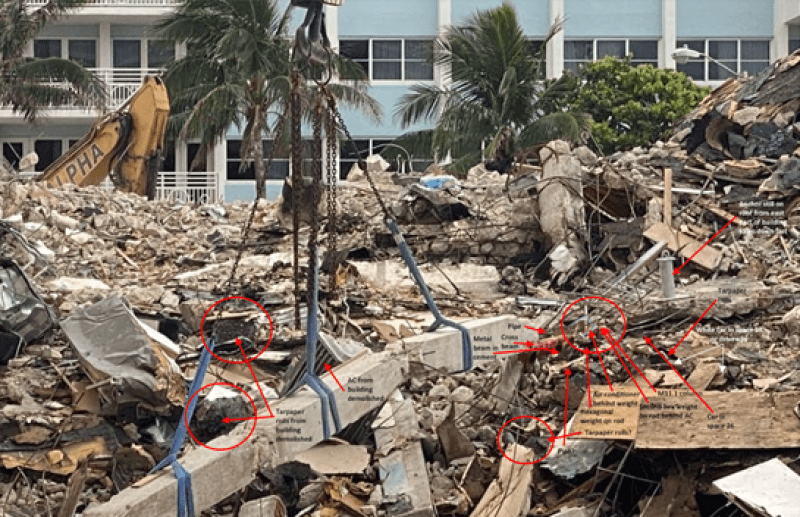
These two photos not only show the same objects seen in the TikTok video, but also the same objects that were seen on the small debris pile left at the end of the ramp for two days when everything else in the parking basement was removed. It is believed that the recovery crew leaving this small debris pile standing for two days was an indication of its importance as supported by red cones connected by red tape left on the ramp and by seeing five Miami Dade firefighters witness every shovelful of debris removed by the crane operator when clearing this region.
I will not go into the implications of these videos at this time. I suspect it will be controversial enough to establish that the main object in these photos is an air conditioner that appears to have dropped from the roof onto the beam between column 27 and column M11.1. This object appears to have sheared the horizontal beam from column 27, thereby eliminating horizontal support from column 27, and initiating the collapse of the pool deck and then of the building itself, just as was seen in the CCTV surveillance video. This appears to be the trigger that caused the collapse. All of this would have been aided by the design errors and construction deficiencies discussed in the Miami Herald article.
The objects in these photos should be viewable much more easily than those in any of the previous photos I have shown. If anyone still persists in saying that there is nothing in these photos and that these objects are all a figment of my imagination, then they are taking a gamble that the final report for this collapse will contain evidence of these objects and maybe even cite them as the trigger for the collapse. In this case deniers of this evidence and those who ridicule it will look foolish indeed.

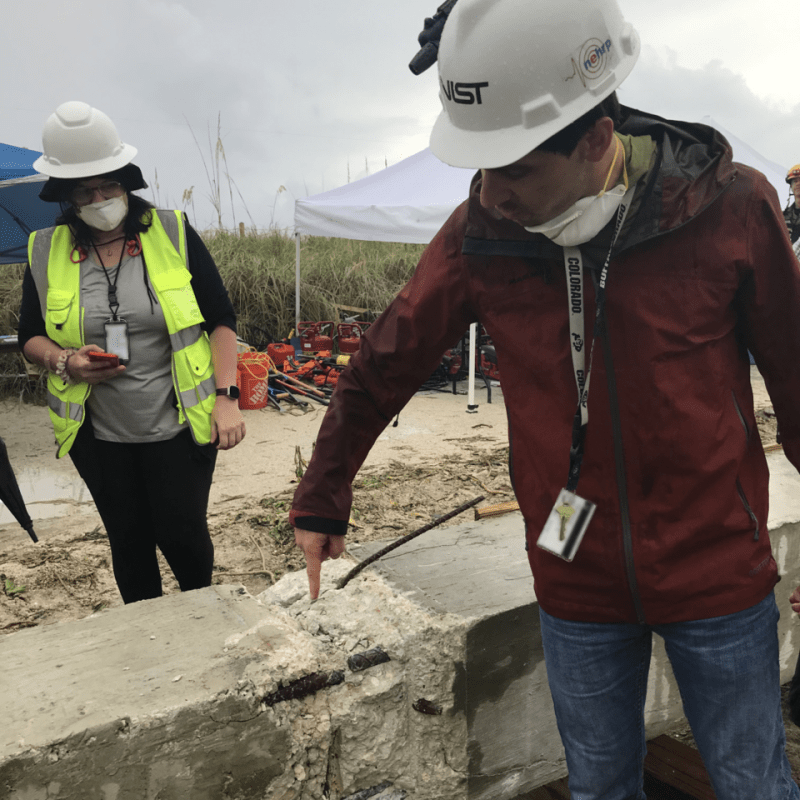
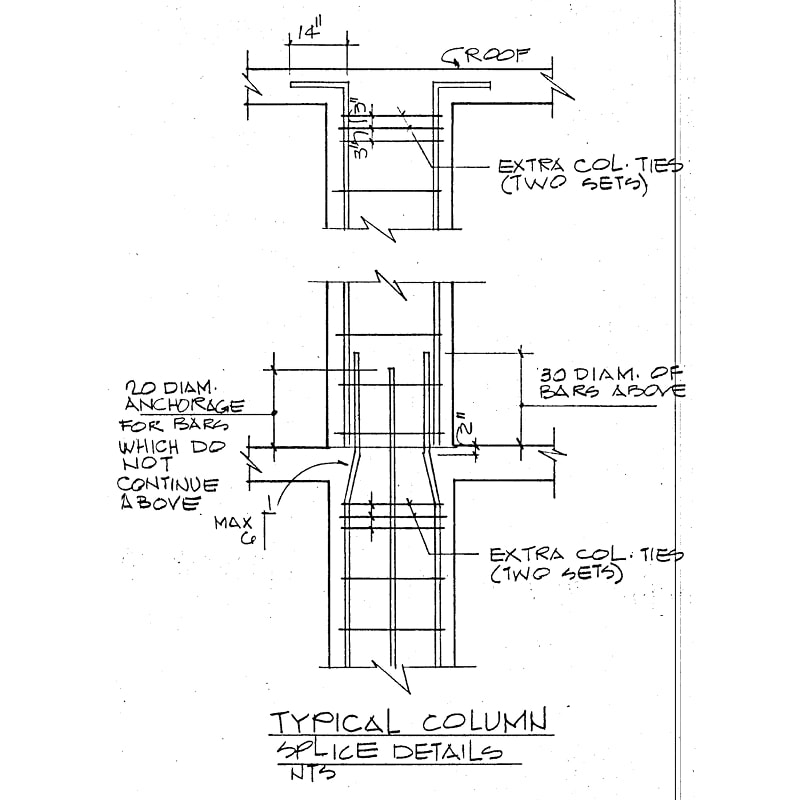
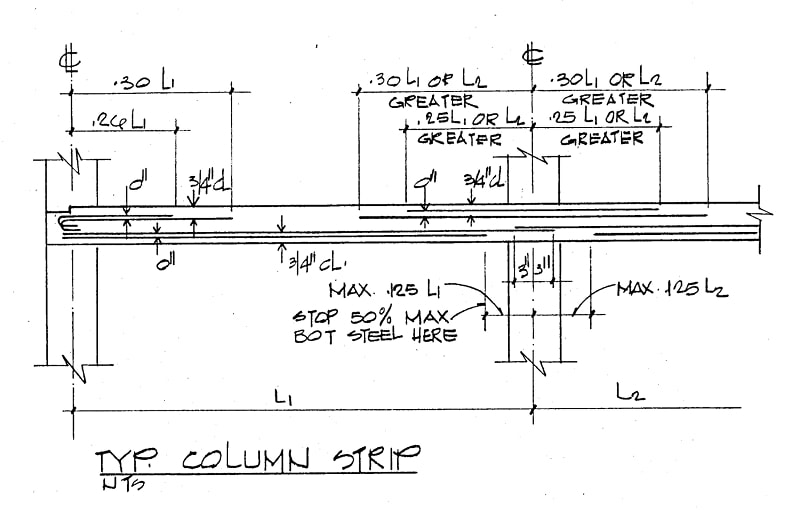




![[cheers] [cheers] [cheers]](/data/assets/smilies/cheers.gif)
